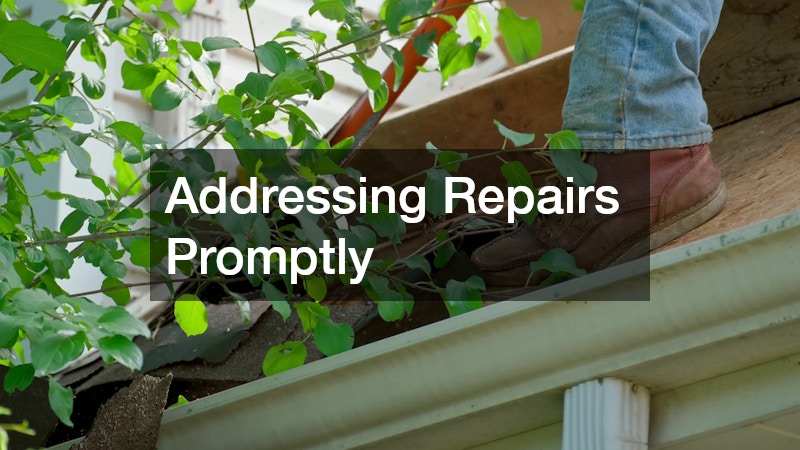Metal Roofing Contractor Tips for Long-Lasting Roofs
Metal roofs are becoming increasingly popular due to their durability, efficiency, and aesthetic appeal. However, not all metal roofs are created equal, and proper installation and maintenance are key to ensuring longevity. This article will provide essential tips from experienced metal roofing contractors on prolonging the life of your metal roof.
The Benefits of Choosing Metal Roofing
Durability and Longevity
Metal roofs are renowned for their incredible lifespan, which can often exceed 40-70 years with the right maintenance. This durability is thanks to the natural strength of materials like aluminum, copper, and steel, which are commonly used in metal roofing.
These materials stand strong against severe weather conditions, such as heavy rains, snowstorms, and even hurricane-force winds.
In addition to their sturdy nature, metal roofs significantly reduce the need for frequent replacements, making them a cost-effective choice over time. By installing a metal roof, homeowners can avoid the hassle and expense of replacing shingles or tiles every 15-20 years. This makes metal roofs not just a choice for the present, but an investment in the future.
Moreover, metal roofs are resistant to issues that commonly affect other roofing materials, such as rot, insect infestation, and fire. The non-combustible nature of metal adds an extra layer of safety, especially in areas prone to wildfires. This aspect not only contributes to the longevity of the roof but also enhances the overall safety and security of the home.
Energy Efficiency and Environmental Impact
One of the major advantages of metal roofing is its excellent energy efficiency. Metal roofs reflect a significant portion of solar radiation, which can lower cooling costs by 10-25%. This reflective property not only keeps homes cooler in summer but also contributes to reducing overall energy consumption.
The environmental impact of metal roofs is another compelling reason for their growing popularity. Many metal roofs are made from 25-95% recycled materials, making them a sustainable choice in building materials. At the end of their lifecycle, metal roofs are 100% recyclable, further minimizing their environmental footprint.
Ensuring Proper Installation of a Metal Roof
Choosing the Right Contractor
Selecting an experienced and skilled contractor is crucial to ensuring the proper installation of a metal roof. It is important to verify the contractor’s credentials, check for necessary licenses, and ensure they have adequate insurance. Requesting references and reviewing previous work can provide insights into their quality of craftsmanship and reliability.
Another key consideration is the contractor’s experience, specifically with metal roofing. Since metal roofs have different installation requirements compared to other roofing types, expertise in metal roofing techniques is vital. Look for contractors who specialize in metal roofing or have substantial experience in this area to avoid common installation pitfalls.
Understanding the Installation Process
Familiarizing yourself with the installation process of a metal roof allows you to actively participate in the project. It starts with the selection of the right underlayment, which acts as a moisture barrier and provides additional insulation. Proper spacing and fastening techniques must be followed to accommodate the natural expansion and contraction of metal.
Watching out for the quality of seams and fasteners during the installation is crucial, as these are common points of failure in metal roofs if not properly handled. Ensuring that the contractor uses high-quality screws and sealants can prevent leaks and potential structural issues. By understanding these aspects, you can better monitor progress and ensure quality installations.
Maintenance Required for Metal Roofs
Regular Inspections and Cleaning
Regular inspections and cleaning are an integral part of maintaining a metal roof’s longevity and appearance. Scheduling inspections every six months, and especially after severe weather events, can help identify potential issues early. During these inspections, look for debris accumulation, signs of corrosion, or damage from fallen branches and other environmental factors.
Cleaning the roof is essential to prevent build-up that can hold moisture against the metal surface. Use a soft brush or water hose to remove leaves, dirt, and other debris that gather, particularly in valleys and gutters. Remember to avoid harsh cleaners or pressure washers, as they can damage the roof’s finish or protective coating.
Addressing Repairs Promptly
Tending to repairs as soon as they arise is critical in maintaining the structural integrity of a metal roof. Some common issues that require prompt attention include loose panels, missing fasteners, and damaged flashing. Ignoring these problems can lead to leaks and potentially significant structural damage over time.
As metal expands and contracts with temperature changes, ensuring that fasteners remain tight and secure is vital. Regularly check and replace any loose or missing screws to prevent parts of the roof from lifting or allowing water ingress. Timely repair of small issues can avert larger, more costly repairs in the future.
A metal roof is a long-term investment that can significantly enhance the value and efficiency of a home. By understanding its benefits, ensuring its proper installation, and maintaining it correctly, homeowners can enjoy a durable, energy-efficient roof that retains its aesthetic and functional appeal for decades. Investing time in selecting a qualified contractor, understanding the installation nuances, and committing to regular maintenance will ensure that your metal roof stands the test of time.



